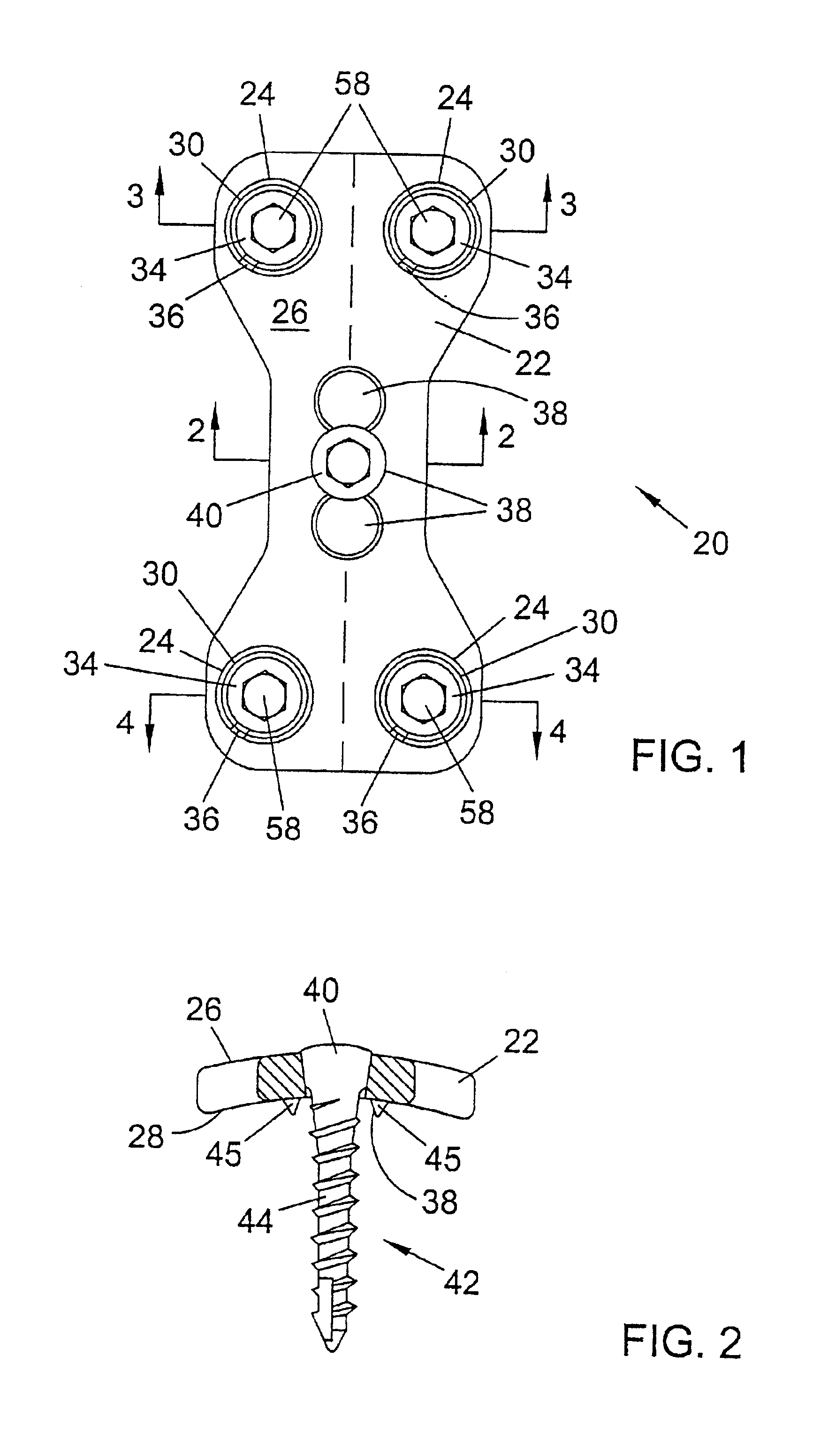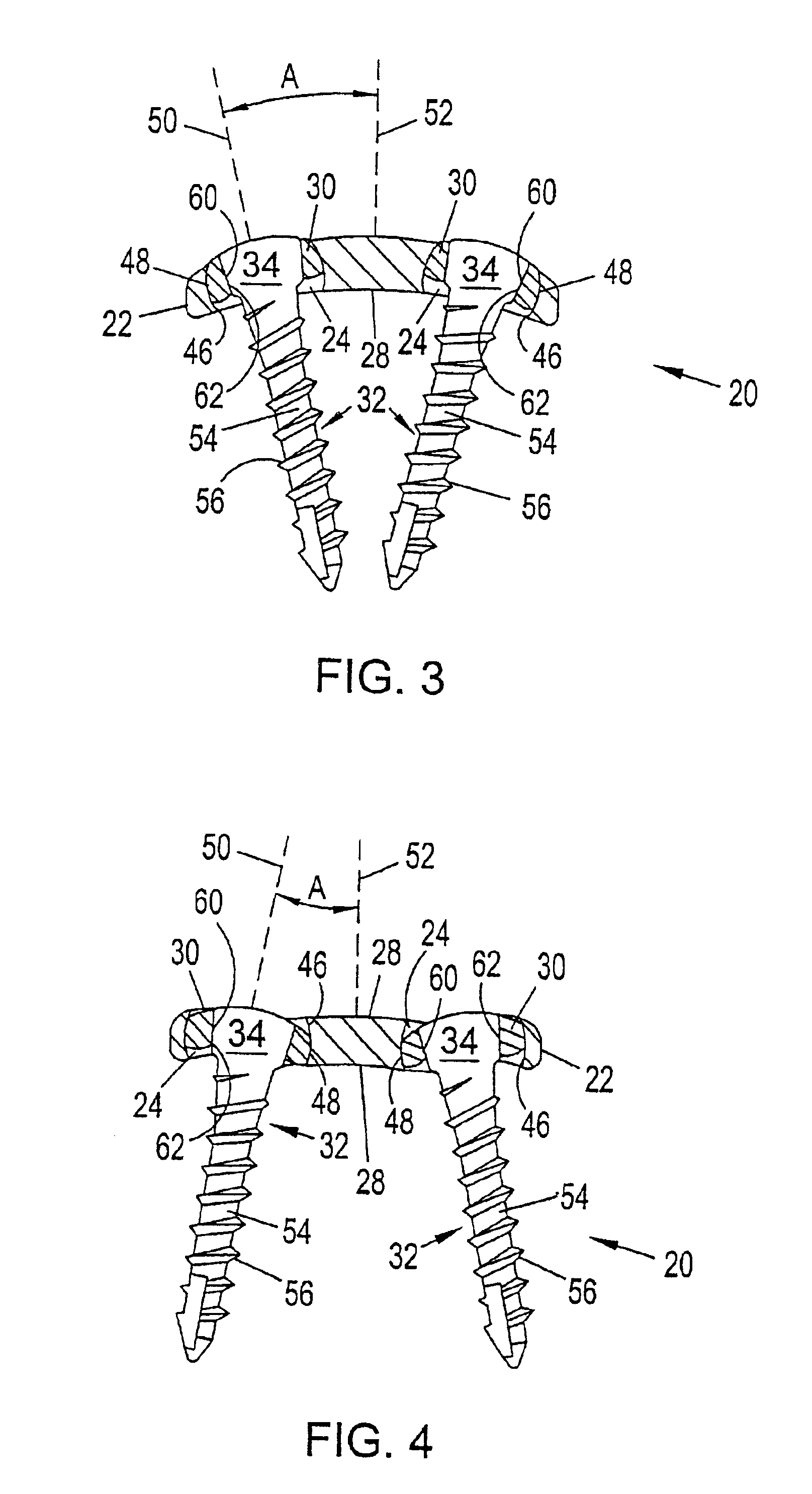System and method for stabilizing the human spine with a bone plate
a technology of bone plate and fixation system, which is applied in the field of spinal fixation system, can solve the problems of risky fixation of spinal plate to cervical portion of spine, risky movement of uni-cortical fasteners, and inability to maintain the position of uni-cortical fasteners, so as to inhibit the backout of the fastener and strong connection
- Summary
- Abstract
- Description
- Claims
- Application Information
AI Technical Summary
Benefits of technology
Problems solved by technology
Method used
Image
Examples
Embodiment Construction
[0054]Referring to the drawings, and particularly to FIG. 1, a spinal plating system is designated generally as 20. The spinal plating system 20 may be used to correct problems in the lumbar and cervical portions of the spine. For example, the spinal plating system 20 may be implanted into the occiput bone that is located at the base of the skull. The spinal plating system 20 may also be installed anterior to the spine. The spinal plating system 20 includes plate 22 that is placed adjacent to a portion of the spine and spans at least two vertebrae. Plate 22 may include four end holes 24, located at corners of the plate. End holes 24 pass vertically through plate 22 such that the holes extend from an upper surface 26 to a lower surface 28 of the plate as depicted in FIG. 2. End holes 24 are configured to receive rings 30. Fasteners 32 fit within the rings 30. Herein, “fastener” means any elongated member, threaded or non-threaded, which is securable within a bone. Fasteners include, ...
PUM
 Login to View More
Login to View More Abstract
Description
Claims
Application Information
 Login to View More
Login to View More - R&D
- Intellectual Property
- Life Sciences
- Materials
- Tech Scout
- Unparalleled Data Quality
- Higher Quality Content
- 60% Fewer Hallucinations
Browse by: Latest US Patents, China's latest patents, Technical Efficacy Thesaurus, Application Domain, Technology Topic, Popular Technical Reports.
© 2025 PatSnap. All rights reserved.Legal|Privacy policy|Modern Slavery Act Transparency Statement|Sitemap|About US| Contact US: help@patsnap.com



